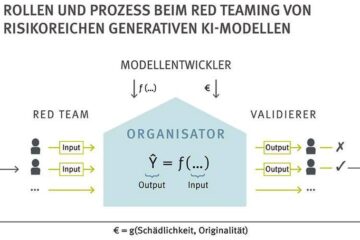New Corrosion-resistant Polymers Developed to Replace Chromates

A new group of non-toxic, corrosion-resistant polymers developed by University of Rhode Island scientist Sze Yang will likely put a smile on the face of Erin Brockovich.
The polymers are designed as a replacement for chromates in paints and other coating systems. Chromates have been used commercially to protect metal from corrosion for 50 years but have recently been declared hazardous. Brockovich’s efforts to demonstrate that they caused widespread health problems in Hinckley, Cal. was made into the Academy Award-winning movie Erin Brockovich in 2000 starring Julia Roberts.
„There is now a worldwide push on to remove chromates because they are carcinogens,“ said Yang, a professor of chemistry and one of URI’s most prolific inventors. „Its use is gradually decreasing as replacements are found.“
The new product is a two-strand, conducting polymer that can emulate the most important functions of chromates. Rather than serve as a barrier coating, which are ineffective when damaged by scratches, chromates and the new URI polymers inhibit the process of corrosion and are „self-healing.“ They promote the formation of a protective layer and therefore can resist scratch damage, pinholes, pitting, and stress cracking corrosion.
„Typical polymers are insulators, but conducting polymers allow electrons to move along the polymer chain,“ explained Yang, who collaborated on the research with Richard Brown, a URI professor of chemical engineering. „This ability to give and take electrons is essentially the same as what chromates do — interrupt the electro-chemical process of corrosion formation.“
Unlike other efforts to develop single-strand, corrosion-resistant conducting polymers, this low-cost polymer has a second strand that provides space for a variety of modifications to its physical structure, making it more malleable and adaptable for many application processes, including spraying, dipping or spin coating.
Major potential markets include coating of aluminum alloys for aircraft, aluminum and steel for the automotive industry, and concrete-reinforcing bars for bridges, highways and buildings. The polymers are effective as a low-cost, minor additive to paint, and can be soluble in commercial paint solvents and used in water-based epoxies. It also is effective for surface treatments, steel coil coating, and as a corrosion resistant primer under other resin-coating systems.
Corrosion is a chemical process that causes rust and the deterioration of metals and other materials. „We can usually see rust easily, but the bigger problem is the dangerous weakening effects of corrosion that we can’t see,“ Yang said.
In addition to their anti-corrosive properties, the new polymers are also effective as a coating to prevent the buildup of electrostatic charges. They can be used in a wide variety of ways, from surgical wards and computer chip „clean rooms“ where static can interfere with operations and production, to applications on rugs, electrical appliances and many other products that naturally become charged with static electricity. They can be especially useful in operations where combustible materials are in use, as discharges of static in these circumstances can be a significant hazard.
Yang and Brown have been issued two patents and have four others pending on various versions of the new conducting polymers. Laboratory studies have been completed on the polymer syntheses, on some test coating formulations, and corrosion tests of coatings on aluminum and steel. With the research complete, the co-inventors are now seeking collaborators to commercialize the polymers.
Media Contact
Weitere Informationen:
http://www.uri.eduAlle Nachrichten aus der Kategorie: Materialwissenschaften
Die Materialwissenschaft bezeichnet eine Wissenschaft, die sich mit der Erforschung – d. h. der Entwicklung, der Herstellung und Verarbeitung – von Materialien und Werkstoffen beschäftigt. Biologische oder medizinische Facetten gewinnen in der modernen Ausrichtung zunehmend an Gewicht.
Der innovations report bietet Ihnen hierzu interessante Artikel über die Materialentwicklung und deren Anwendungen, sowie über die Struktur und Eigenschaften neuer Werkstoffe.
Neueste Beiträge

Entscheidender Durchbruch für die Batterieproduktion
Energie speichern und nutzen mit innovativen Schwefelkathoden. HU-Forschungsteam entwickelt Grundlagen für nachhaltige Batterietechnologie. Elektromobilität und portable elektronische Geräte wie Laptop und Handy sind ohne die Verwendung von Lithium-Ionen-Batterien undenkbar. Das…

Wenn Immunzellen den Körper bewegungsunfähig machen
Weltweit erste Therapie der systemischen Sklerose mit einer onkologischen Immuntherapie am LMU Klinikum München. Es ist ein durchaus spektakulärer Fall: Nach einem mehrwöchigen Behandlungszyklus mit einem immuntherapeutischen Krebsmedikament hat ein…

So soll risikoreiche generative KI geprüft werden
Die beschlossene KI-Verordnung der EU sieht vor, dass Künstliche-Intelligenz-Modelle (KI) „für allgemeine Zwecke mit systemischem Risiko“ besonders strikt überprüft werden. In diese Modellkategorie gehören auch populäre generative KI-Modelle wie GPT4…





















